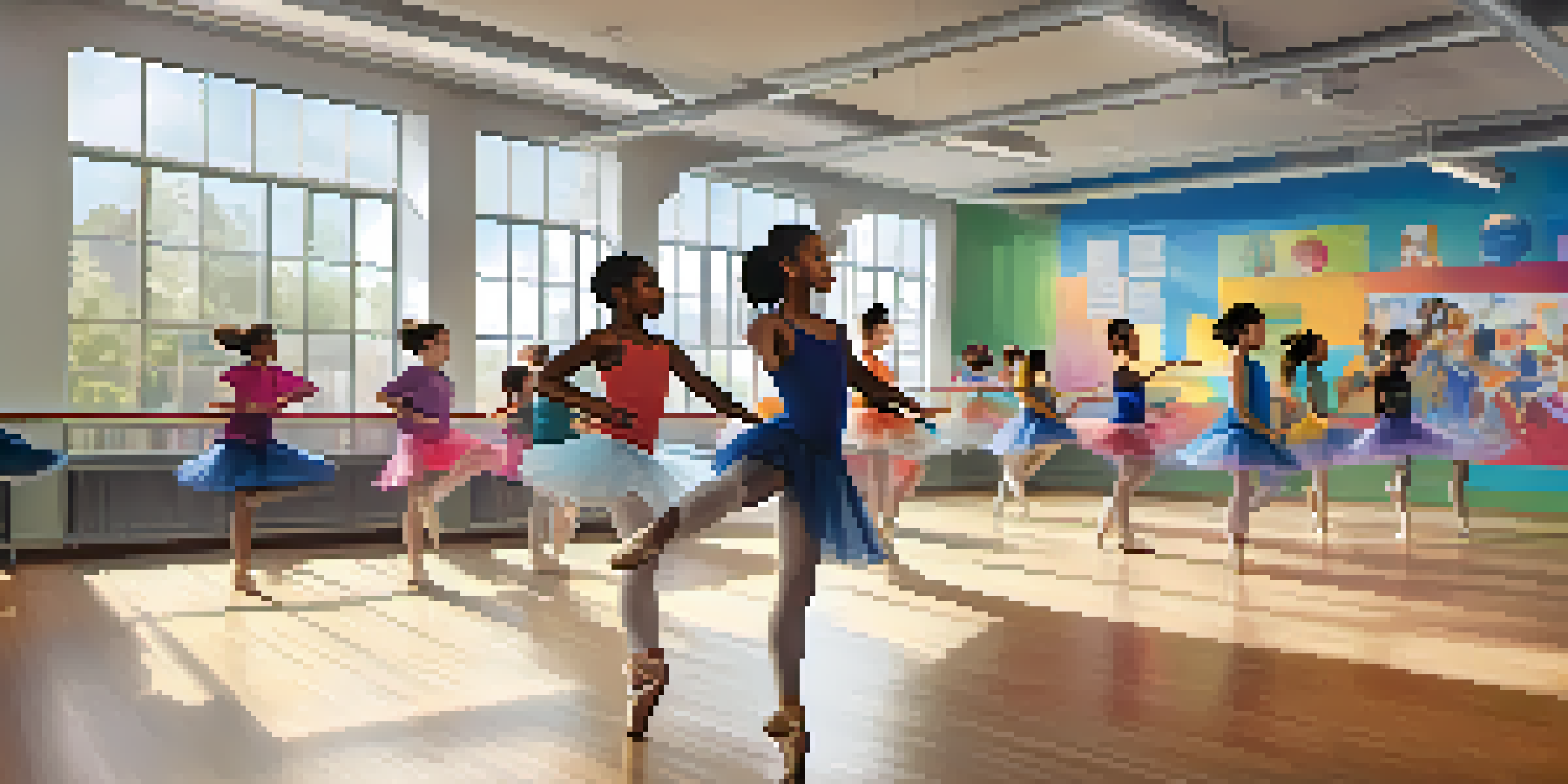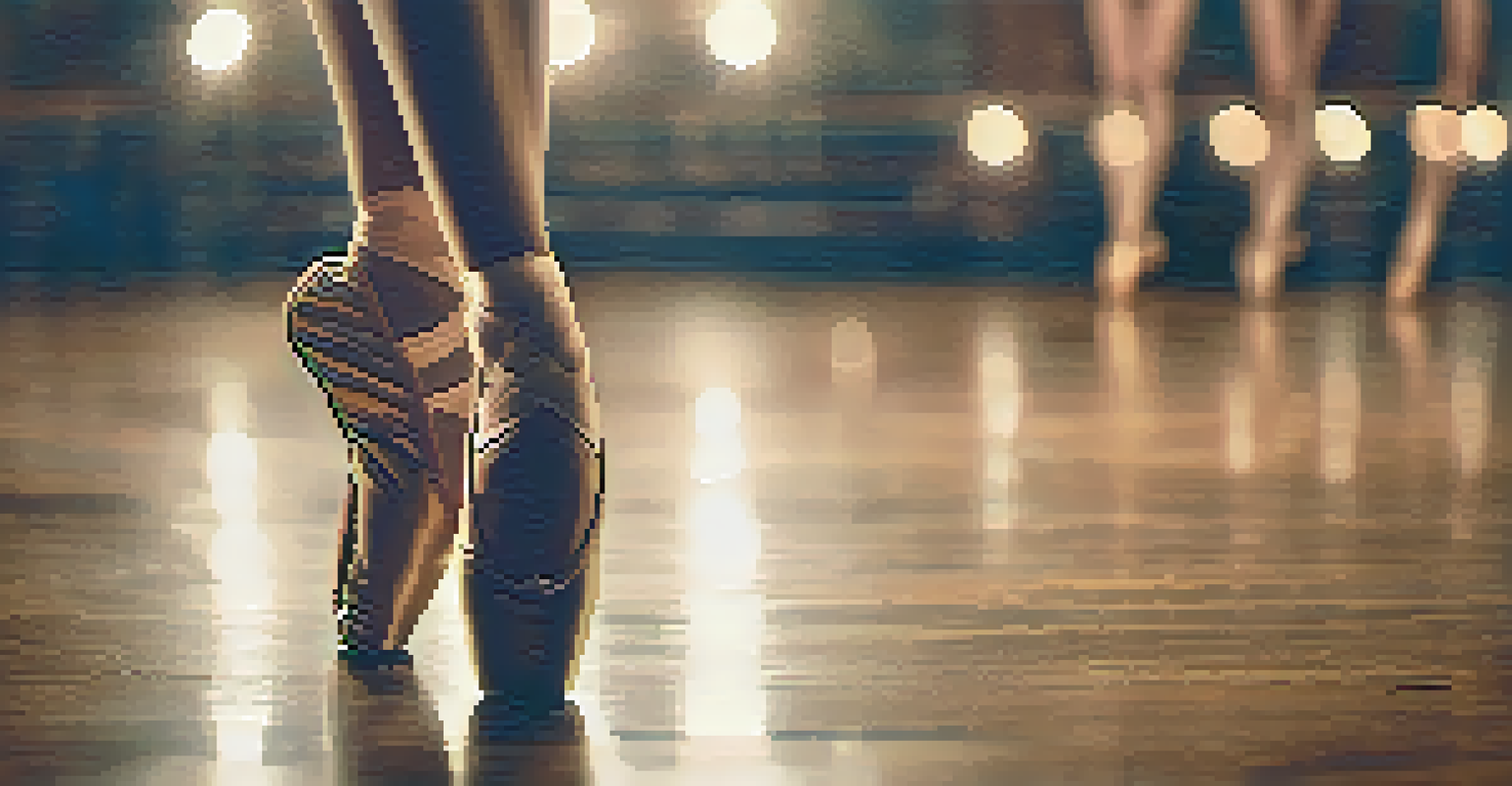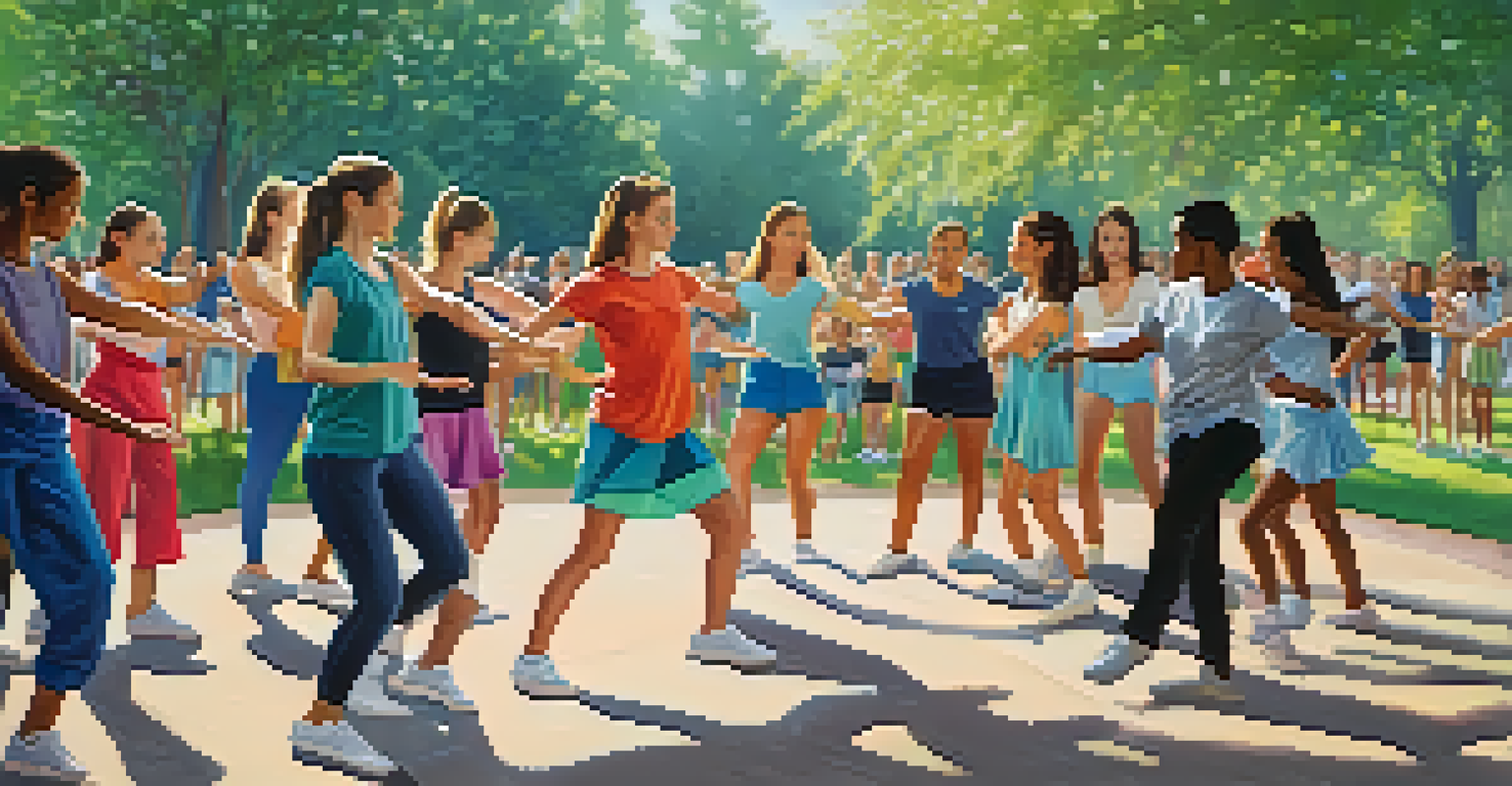The Historical Context of Dance Education in American Schools

The Roots of Dance in Early American Education
Dance has been a part of human culture for centuries, but in American schools, its roots can be traced back to the 19th century. Initially, physical education classes included dance as a way to promote fitness and social skills among students. The focus was often on social dances, reflecting the cultural norms of the time. This integration of dance into the curriculum laid the groundwork for its future significance in education.
Dance is the hidden language of the soul.
As the 20th century approached, the perception of dance began to shift, with more emphasis placed on artistic expression. Schools started to recognize the potential of dance as an educational tool, promoting creativity and self-expression. This change paved the way for more structured dance programs within physical education, allowing students to explore different styles and techniques.
However, the inclusion of dance in the school curriculum was not without challenges. Many educators questioned its educational value compared to traditional subjects like math or science. Despite these challenges, dedicated advocates for dance education began to emerge, pushing for its recognition as a vital component of a well-rounded education.
The Influence of the Arts Movement in the 1960s
The 1960s marked a significant turning point for arts education, including dance, within American schools. This era saw the rise of the arts movement, advocating for the inclusion of creative subjects in the educational system. Dance education began to gain traction as educators recognized its role in enhancing student engagement and learning outcomes.

During this time, pioneering figures like Doris Humphrey and Martha Graham inspired a generation of dancers and educators alike. Their innovative approaches to dance not only influenced performance but also shaped how dance was taught in schools. This led to the establishment of more formal dance education programs within arts departments, further legitimizing dance as an essential subject.
Dance's Evolution in Education
Dance has transitioned from a physical education component in the 19th century to a recognized art form that promotes creativity and cultural awareness.
Moreover, the influence of cultural diversity began to emerge during this period, encouraging schools to incorporate various dance styles from different cultures. This expansion enriched the curriculum and provided students with a broader understanding of the world around them, making dance a powerful medium for cultural expression.
The Establishment of Dance Education Standards
As dance education evolved, the need for standardized curricula became increasingly apparent. In the 1970s and 1980s, organizations such as the National Dance Education Organization (NDEO) emerged to advocate for quality dance education across schools. They aimed to establish a framework that would guide educators in developing effective dance programs and curricula.
The dance is a poem of which each movement is a word.
These standards emphasized not just technical skills but also the importance of creativity, critical thinking, and cultural awareness in dance education. By providing a comprehensive approach, educators were better equipped to foster students' artistic growth and appreciation for dance as an art form.
Furthermore, these standards encouraged collaboration among educators, leading to the development of workshops, resources, and networking opportunities. This sense of community helped elevate the status of dance education and ensured that it remained a relevant and vital part of the school curriculum.
The Impact of Technology on Dance Education
With the turn of the 21st century, technology began to play a significant role in dance education. The rise of digital media and online platforms provided new avenues for teaching and learning dance. Educators embraced tools like video tutorials and social media, making dance more accessible to students outside the traditional classroom setting.
These technological advancements also allowed for innovative teaching methods, such as virtual dance classes and online choreography competitions. Students could now connect with peers and professionals from around the world, enriching their learning experiences. This global perspective fostered a deeper appreciation for diverse dance forms and styles.
Advancements Through Technology
The integration of technology in dance education has opened new avenues for learning, making dance more accessible and engaging for students.
However, the integration of technology also presented challenges, such as the need for educators to adapt their teaching methods. Balancing screen time with physical activity became crucial, ensuring that students received a well-rounded dance education. Nevertheless, technology continues to shape the landscape of dance education, making it more engaging and inclusive.
Current Trends in Dance Education
Today, dance education in American schools is more vibrant and diverse than ever. Programs now encompass a wide range of styles, including ballet, hip-hop, contemporary, and cultural dances. This variety not only caters to students' interests but also reflects the evolving landscape of dance as an art form.
Moreover, there is a growing emphasis on interdisciplinary approaches, where dance is integrated with subjects like science, history, and literature. This holistic perspective enhances students' learning experiences and allows them to see the connections between dance and other disciplines. Such initiatives help students develop critical thinking and problem-solving skills.
Additionally, the importance of inclusivity in dance education is gaining recognition. Schools are increasingly focusing on creating welcoming environments for students of all backgrounds and abilities. This commitment to inclusivity ensures that dance education remains accessible and relevant to all, fostering a love for dance among diverse populations.
Challenges Facing Dance Education Today
Despite the progress made in dance education, challenges persist. One significant hurdle is the lack of funding for arts programs in many schools, which often leads to the elimination or reduction of dance classes. This budgetary pressure places dance education at risk, making it crucial for advocates to continue fighting for its place within the curriculum.
Additionally, the perception of dance as merely an extracurricular activity rather than a core subject poses another challenge. Many educators and administrators still prioritize traditional academic subjects over the arts, which can undermine the value of dance education. This perception can hinder the growth and development of dance programs in schools.
Challenges in Dance Education
Despite its growth, dance education faces challenges such as funding cuts and the perception of being a secondary subject in schools.
Furthermore, the COVID-19 pandemic highlighted issues such as the need for adaptability and resilience within dance education. With many schools transitioning to online learning, educators had to find new ways to engage students virtually. This experience underscored the importance of creativity in overcoming obstacles and ensuring that dance education remains a vital part of students' lives.
The Future of Dance Education in American Schools
Looking ahead, the future of dance education in American schools holds both promise and potential for growth. As the demand for arts education continues to rise, there is hope for increased funding and resources dedicated to dance programs. This could lead to the establishment of more comprehensive curricula that emphasize the importance of dance as an essential part of education.
Moreover, the continued integration of technology in dance education is likely to expand. Virtual classes and online collaborations will provide students with opportunities to learn from industry professionals and connect with peers globally. This digital landscape will further democratize dance education, making it accessible to a broader audience.

Ultimately, the future of dance education will depend on the commitment of educators, advocates, and communities to prioritize the arts. By recognizing dance as a vital component of a well-rounded education, we can ensure that future generations continue to experience the joy, creativity, and cultural richness that dance brings.